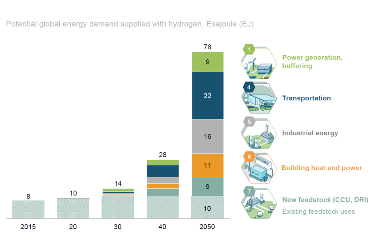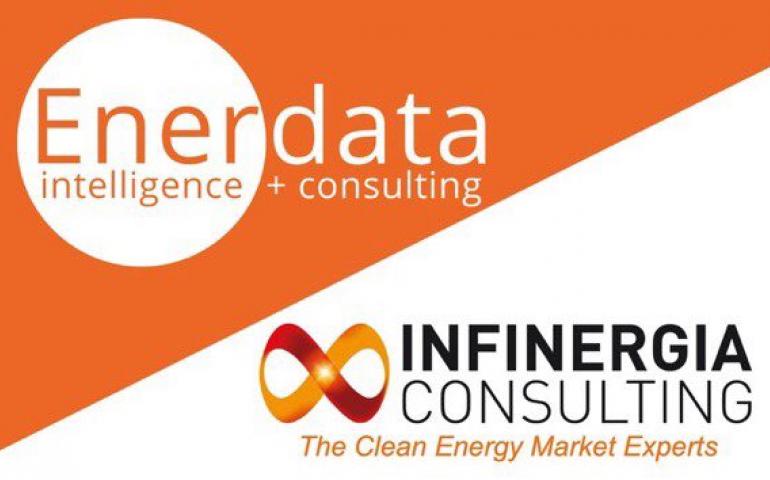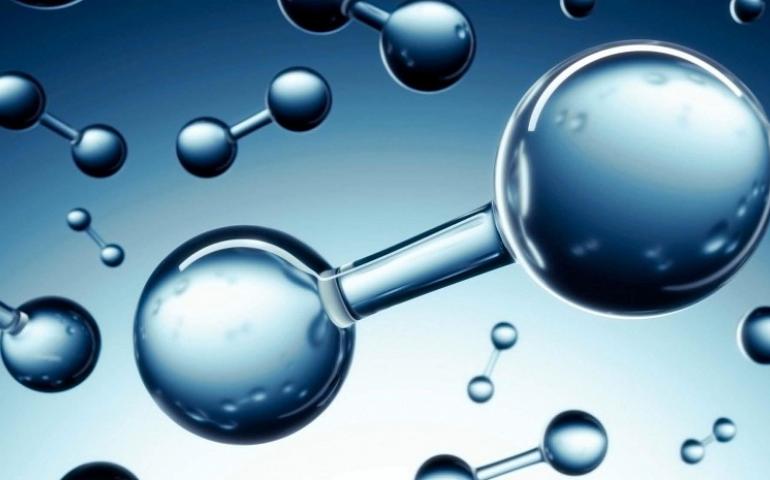Production de masse d'hydrogène par électrolyse
Infinergia est un cabinet d'études technico-économiques et de marché sur l'énergie et en particulier sur l'hydrogène. Plus d'informations via rubrique nos services et base d'acteurs de l'hydrogène ou contactez-nous!
L'hydrogène permet de stocker d'énormes quantités d'énergie et de l'utiliser lorsque c'est nécessaire dans l'industrie, la production d'électricité, et de plus en plus dans la mobilité. Mais un des principaux goulots d'étranglement à l'utilisation généralisée de l'hydrogène comme vecteur d'énergie dans le cadre de la transition énergétique est sa production à partir d'énergies renouvelables. L'électrolyse est la méthode de production la plus populaire actuellement. Mais son développement massif fait face à 3 enjeux majeurs : trouver une électricité renouvelable peu chère, optimiser le facteur de charge des équipements, et déployer massivement le solaire et l'éolien en parallèle.
Article en anglais par Antoine CHALAUX
Let’s take a look at the hydrogen demand scenario from the “Hydrogen Scaling Up” report1: the world currently produces 8 EJ (or 56 million tons) of hydrogen and would need 78 EJ by 2050 (or 550 million tons). A ten folds increase in 35 years.
Today, about 95% of the production of hydrogen comes from fossil fuels: steam reforming, partial oxidation, or autothermal reforming are the traditional technologies to convert gas, oil or coal into hydrogen. If we want hydrogen to be a major energy vector in the energy transition, one of the main challenges is to produce much more hydrogen than today and do so from renewable resources.
Current primary sources for hydrogen production worldwide2
The 2 main ways to produce hydrogen from renewables are:
- electrolysis of water with electricity coming from renewable energy,
- biomass chemical reactions that produce hydrogen.
In this article, we will focus on hydrogen production from electrolysis. It is a technology available for decades, but it still faces 3 main challenges in order to become a major source of hydrogen.
First, two main factors must be considered for a viable business case in hydrogen production from electrolysis: electricity prices and environmental constraints. In large electrolysis plants (we’re talking power of 100 MW or more), most of the hydrogen production cost comes from electricity consumption. Some industry actors estimate that the price of electricity should be lower than 30 €/MWh to make a competitive business case. It means LCOE3 of renewables still needs to go down in Europe (lowest LCOE for wind and solar in Germany in 2018 was around 40 €/MWh4). To balance the cost of electricity, governments can help penetration of electrolysis by implementing specific environmental regulations. A carbon tax would increase the price of hydrogen produced from reforming while quotas of hydrogen from renewable sources could also be enforced. A promising project based on these conditions is being developed in the Netherlands5. It aims at producing hydrogen from electrolysis at 2.3 €/kg, which is competitive with hydrogen from fossil fuel.
Schematic overview of the use and production of industrial gasses and electricity network (NIB Project in the Netherlands)
Second point: if electricity only comes from renewables, the capacity utilization rate6 of the electrolyzer will be limited by the capacity factors of photovoltaic plants (10% to 25%), windfarms (20% to 35%) or hydroelectric power plants (25% to 45%)7,8. With a good balance between these sources, higher rates can be achieved but it will not reach an optimal load for maximizing the return on investment of electrolyzer installations.
Third difficulty: the macroscopic needs. Today, a NEL alkaline electrolyzer roughly consume 4 kWh/Nm³ which translates into 45 kWh per kg of hydrogen9 (infrastructure losses should also be taken into account for a proper calculation). Let’s think about a target of 20% of the current world consumption of hydrogen produced by renewable electrolysis by 2030 (11 million tons). It means we need 500 TWh of electricity. It accounts for 8% of the global renewable electricity produced in 2017 (6 200 TWh, mostly hydropower) or 29% of wind and solar power generated that year (1 750 TWh)10. Of course, renewable electricity production will be much higher by then, but this kind of target represents a huge amount of wind and solar power plants dedicated to hydrogen production.
Newer technologies like Proton Exchange Membrane (PEM) or Solid Oxide Electrolysis Cells (SOEC) aim at improving the efficiency of the electrolysis process. In the long run, it may reduce the production cost of hydrogen, but it doesn’t compare with economies of scale.
In the end, the success of large scale water electrolysis relies on a complex mix of cheap and abundant renewable electricity, favorable political rules, and a diversified demand for hydrogen in a specific place.
1 Hydrogen Council, Hydrogen Scaling Up, 2017
3 Levelized Cost of Energy
4 Fraunhofer ISE, Stromgestehungskosten Erneuerbare Energien, March 2018
5 Noordelijke Innovation Board, The Green Hydrogen Economy in the Northern Netherlands, 2017
6 The number of hours an installation is running per year
7 US EIA, page 178 – https://www.eia.gov/electricity/monthly/current_month/epm.pdf
8 RTE, Bilan électrique 2017
9 Hydrogen volume to weight ratio: 1 Nm3 = 0.090 kg
10 Enerdata, Global Energy Statistical Yearbook 2018




